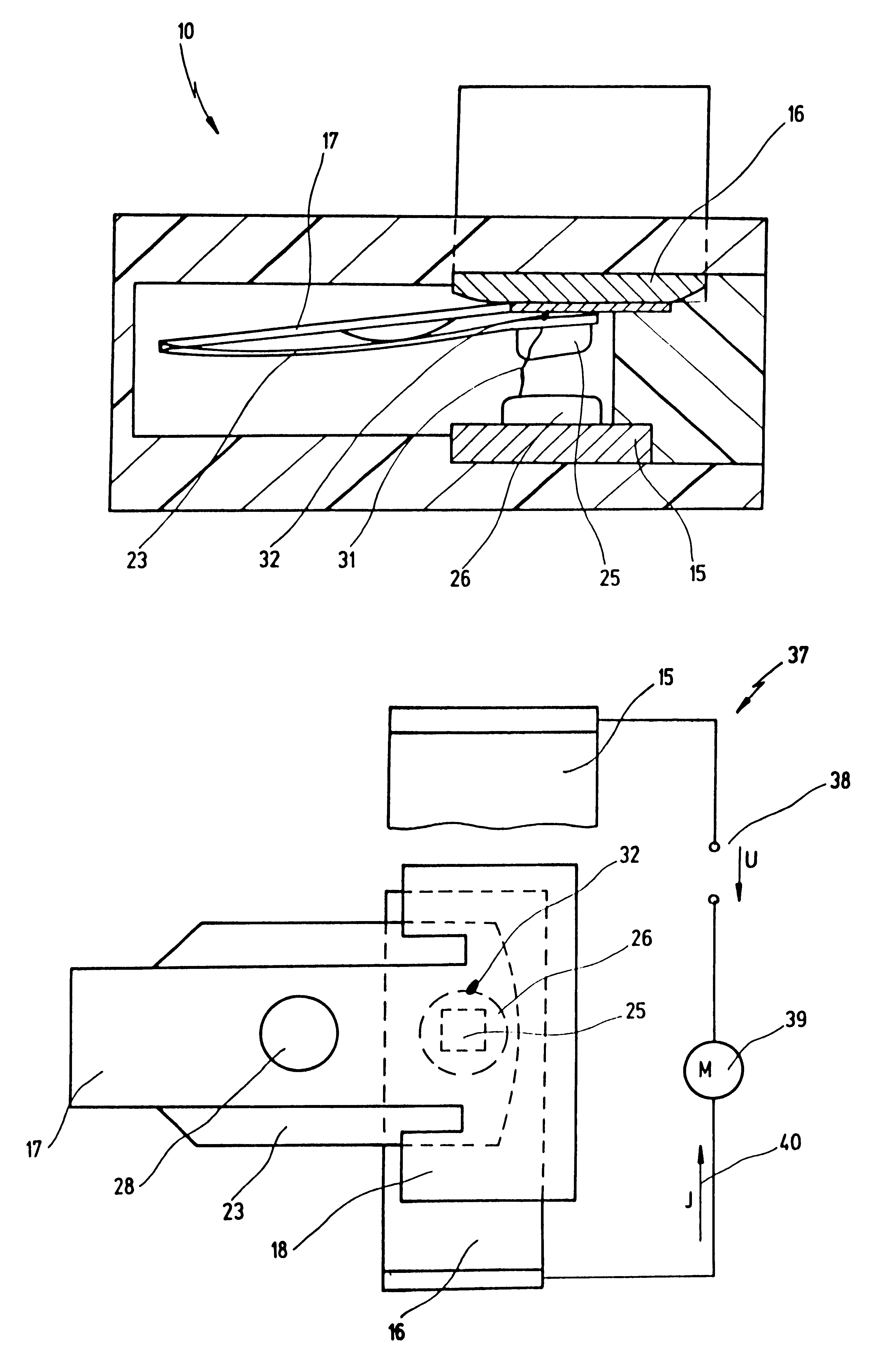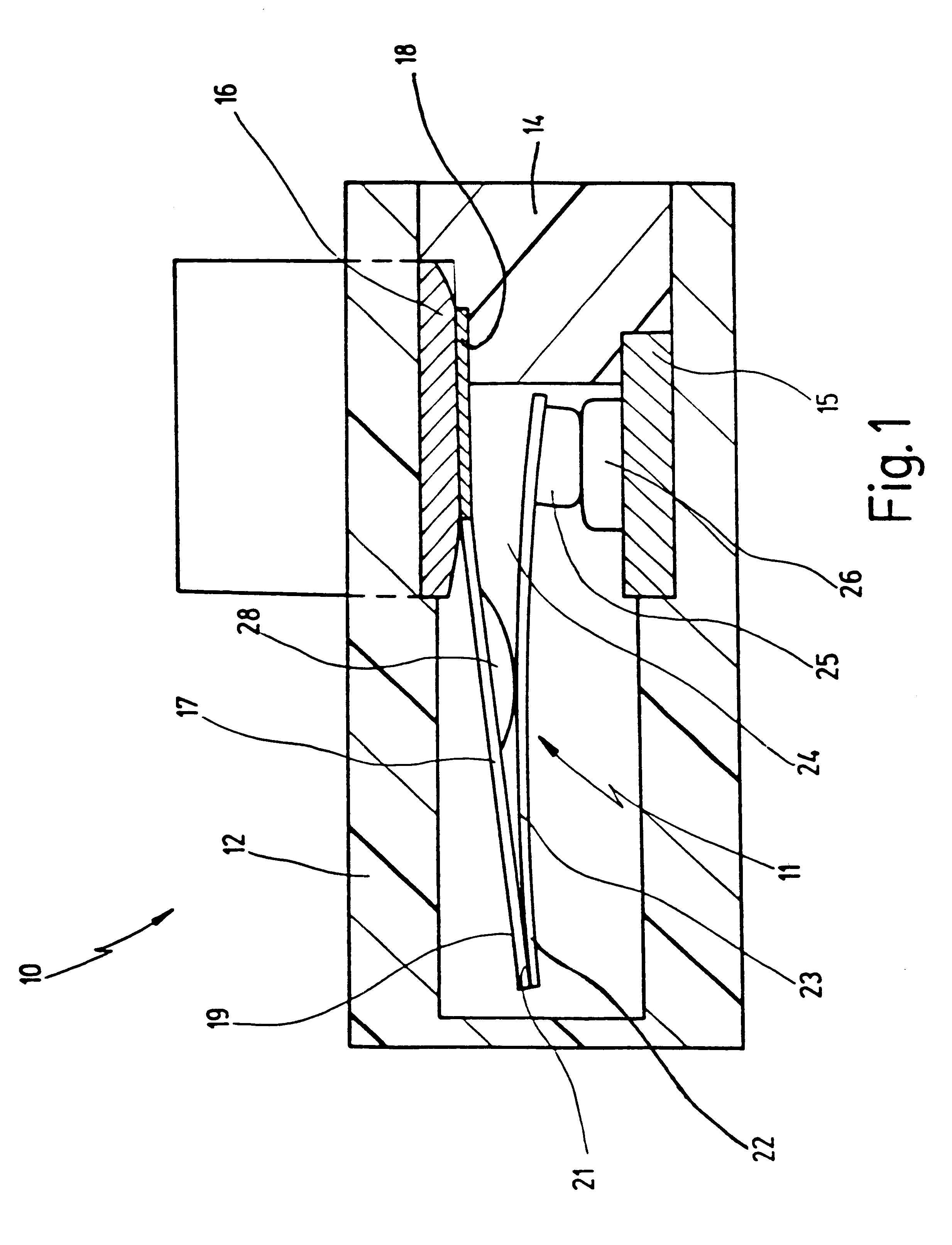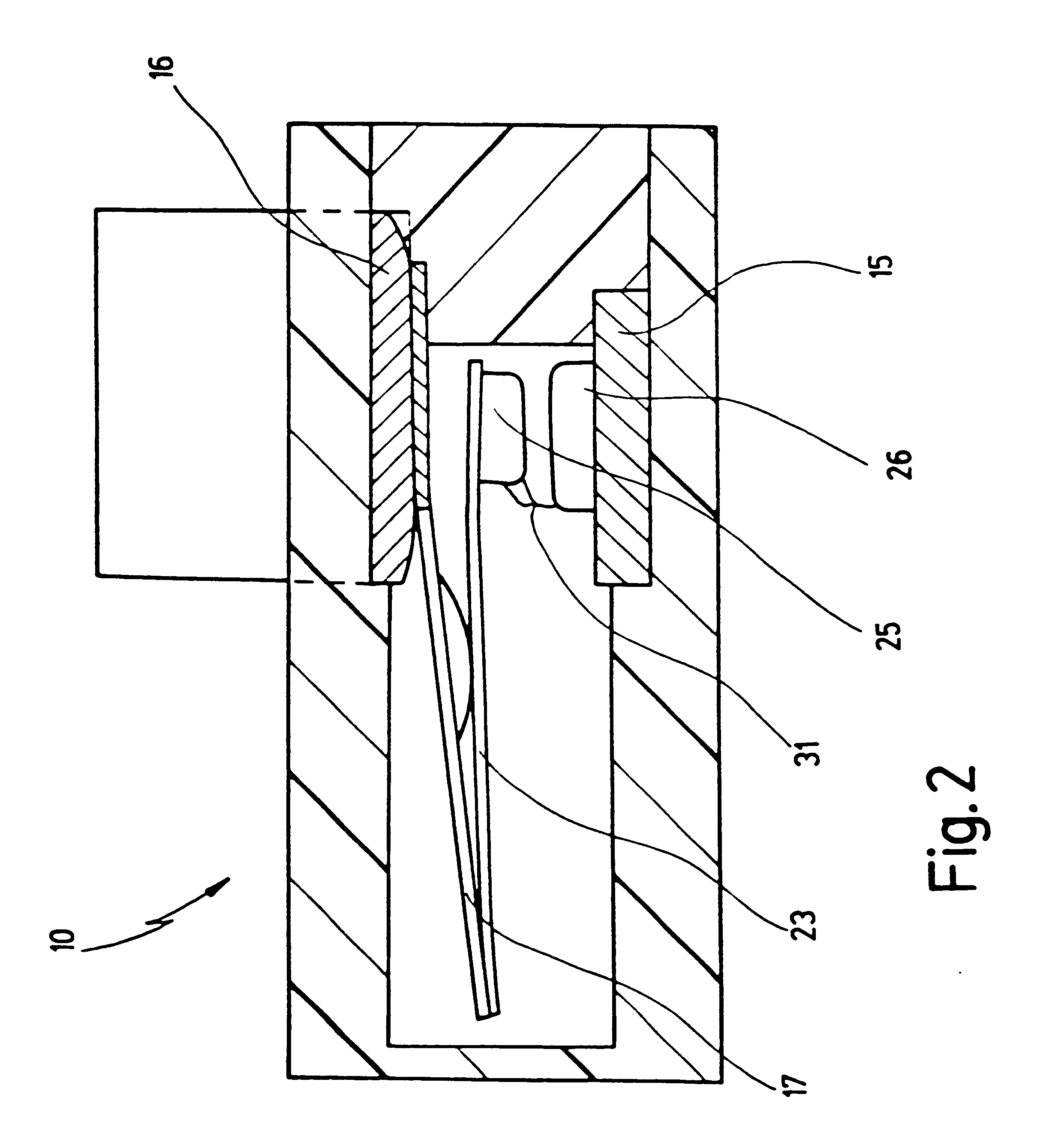Switch having an end of service position in its open state
a technology of switching mechanism and end of service position, which is applied in the direction of heat/cooling contact switch, contacts, electrical equipment, etc., can solve the problems of serious safety risks, switch malfunction is not recognized, and the switch cannot perform its monitoring function
- Summary
- Abstract
- Description
- Claims
- Application Information
AI Technical Summary
Benefits of technology
Problems solved by technology
Method used
Image
Examples
Embodiment Construction
In FIG. 1, 10 designates a switch in a longitudinally sectioned side view. Switch 10 comprises a temperature-dependent switching mechanism 11 that is housed in a plastic housing 12 and is held by a plastic support 14.
Arranged in plastic housing 12 are a first, lower connection electrode 15 and a second, upper connection electrode 16, between which switching mechanism 11 is electrically and mechanically provided.
Switching mechanism 11 comprises a T-shaped spring element 17 that is clamped with its first end 18, which is configured in the manner of a crossbeam, between plastic support 14 and second connection electrode 16. At its second end 19, spring element 17 has a connection 21 to a first end 22 of a bimetallic element 23 that carries at its free end 24 a movable contact element 25. This movable contact element 25 is associated with a stationary contact element 26 that is mounted on first connection electrode 15.
Spring element 17 and bimetallic element 23 extend, mechanically para...
PUM
 Login to View More
Login to View More Abstract
Description
Claims
Application Information
 Login to View More
Login to View More - R&D
- Intellectual Property
- Life Sciences
- Materials
- Tech Scout
- Unparalleled Data Quality
- Higher Quality Content
- 60% Fewer Hallucinations
Browse by: Latest US Patents, China's latest patents, Technical Efficacy Thesaurus, Application Domain, Technology Topic, Popular Technical Reports.
© 2025 PatSnap. All rights reserved.Legal|Privacy policy|Modern Slavery Act Transparency Statement|Sitemap|About US| Contact US: help@patsnap.com



